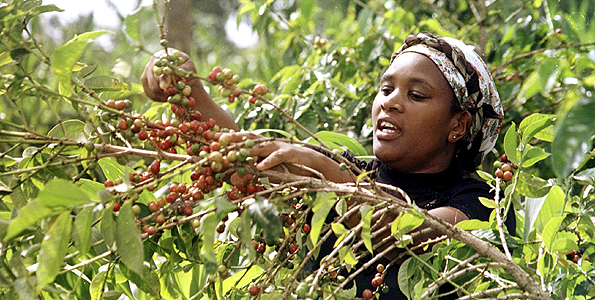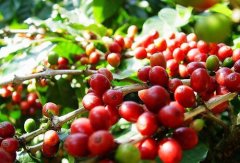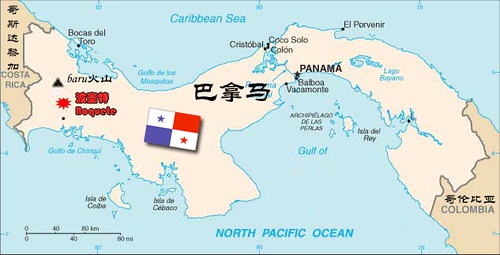There are three ways of plantation: sunshine plantation, full shade plantation and semi-shade plantation.
Panamanian producing areas and manors
The finest coffee in Panama (Panama) is grown in the west of the country, near Costa Rica and the Pacific Ocean. The Boquet district of Chiriqui province is the most famous for its coffee, as well as Wakan, Santa Clara and Kendra. Other areas include David, Remacimeinto, Bugaba and Tole. Only coffee grown at elevations between 1300 and 1500 meters above sea level is considered special coffee.
The BOQUETE region of Panama, located in the province of CHIRIQUI on the border with Costa Rica, is the home of Panama's famous GEISHA coffee and is famous for producing high-quality Arabica coffee. The Tedman & McIntyre (TEDMAN&MACINTYRE ESTATE) estate, located in the mountain area of Poggett 4000 feet above sea level, comes from the two earliest coffee families in Panama, the Tedman family and the McIntyre family.
There are three ways of plantation: sunshine plantation, full shade plantation and semi-shade plantation. Plantations with more than 50 plants per hectare are fully shaded plantations, 25-50 plants are semi-shaded plantations, and less than 25 plants are called sunshine plantations. What is the effect of shading and shading on coffee in the plantations of the two neighbors with the same planting conditions? Shading plantations can slow down the ripening time of coffee fruits, so there are more flavor substances in coffee cherries, so shading itself increases the cost and reduces production, and its coffee flavor is higher than that of semi-shaded plantations under the same planting conditions. now most plantations in Colombia are associated with coffee trees and bananas because Arabica trees are becoming more and more dwarfed. So when the banana tree rises, it acts as a shade.

Important Notice :
前街咖啡 FrontStreet Coffee has moved to new addredd:
FrontStreet Coffee Address: 315,Donghua East Road,GuangZhou
Tel:020 38364473
- Prev

Panamanian Rosa Coffee (GEISHA) is a secret geisha coffee network that is popular all over the world.
In the early years, the identification of top coffee mostly followed Japan, one of the kings of coffee, the Blue Mountains of Jamaica and Kona of Hawaii, but with the continuous improvement of the standard of coffee producing countries and the sharing of information, the species that brought us into contact with Geisha was discovered in the Rose Summer Forest of Ethiopia in 1931 and then sent to the Coffee Research Institute in Kenya; it was introduced to Uganda and Uganda in 1936.
- Next

Panamanian producing area and Manor Villa Donica Manor Boquette green green raw beans 17 mesh Kaduai
Villa Donica Manor Pokui green green raw beans, high moisture content, beans are soft beans, so good heat transmission, so do not worry about uneven baking, aroma and taste are excellent, smooth taste, dark chocolate, nutty aroma, high alcohol thickness, low acidity, long-lasting. [country of origin]: Panama [producing area]: Boquete [altitude]: 1550-1700 m [
Related
- Does Rose Summer choose Blue, Green or Red? Detailed explanation of Rose Summer Coffee plots and Classification in Panamanian Jade Manor
- What is the difference between the origin, producing area, processing plant, cooperative and manor of coffee beans?
- How fine does the espresso powder fit? how to grind the espresso?
- Sca coffee roasting degree color card coffee roasting degree 8 roasting color values what do you mean?
- The practice of lattes: how to make lattes at home
- Introduction to Indonesian Fine Coffee beans-- Java Coffee producing area of Indonesian Arabica Coffee
- How much will the flavor of light and medium roasted rose summer be expressed? What baking level is rose summer suitable for?
- Introduction to the characteristics of washing, sun-drying or wet-planing coffee commonly used in Mantenin, Indonesia
- Price characteristics of Arabica Coffee Bean Starbucks introduction to Manning Coffee Bean Taste producing area Variety Manor
- What is the authentic Yega flavor? What are the flavor characteristics of the really excellent Yejasuffi coffee beans?

